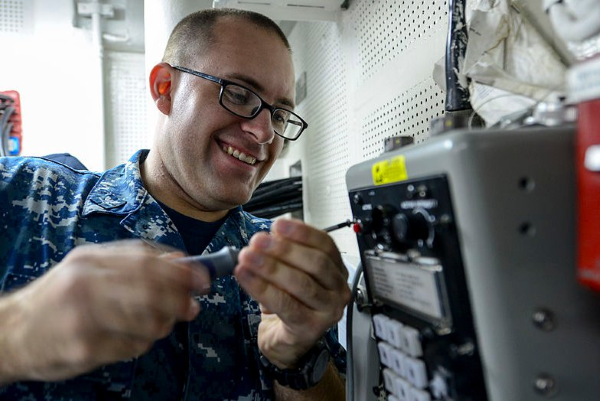The United States Navy charges its Interior Communications Electricians (IC) with the installation, maintenance, and repair of all the interior communications equipment required aboard ships and at shore facilities.
Interior communications are critical to the efficient working of all shipboard activity.
If those communications systems go down, all sorts of problems can arise.
ICs work everywhere onboard the ship, from the bottom of the ship, all the way up the mast, all the way forward, and all the way aft.
The Navy established the IC rate in 1948, a derivative of the Electrician’s Mate rating.
Shipmates often refer to Interior Communications Electricians as “IC-men.”
Related Article – Navy Electricians Mate (EM): Career Details
Jump To A Section
Training And Career Path
What’s Life Like For An Interior Communications Electrician?
Sea/Shore Rotation
Pay and Benefits
Job Reviews
Civilian Career Opportunities
Requirements and Qualifications
To serve as an Interior Communications Electrician (IC) in the United States Navy, you must meet certain requirements:
- Must be a US citizen.
- Must be between the ages of 18 and 41.
- Must have a high school diploma or equivalent.
- Must be eligible for a security clearance.
- Must have normal color perception.
- Must have an Armed Forces Vocational Aptitude Battery (ASVAB) score of AR (Arithmetic Reasoning) + MK (Mathematics Knowledge) + EI (Electronics Information) +GS (General Science) = 213. Alternatively, an ASVB score of AR+MK+VE+ Assembling Objects (AO) >=218 will also qualify you.
Training and Career Path
ICs, like all other Navy enlisted personnel, must successfully complete 10 weeks of Navy Recruit Training, at the Recruit Training Command, Great Lakes (RTC Great Lakes).
After Boot Camp, ICs head across the base to attend Advanced Technical Training (ATT).
For nine weeks, sailors learn the basics of technical documentation and the fundamentals of mechanical theory. Electrical and Electronics are also covered in this rudimentary course.
Related Article – Navy Electronics Technician (AT): Career Details
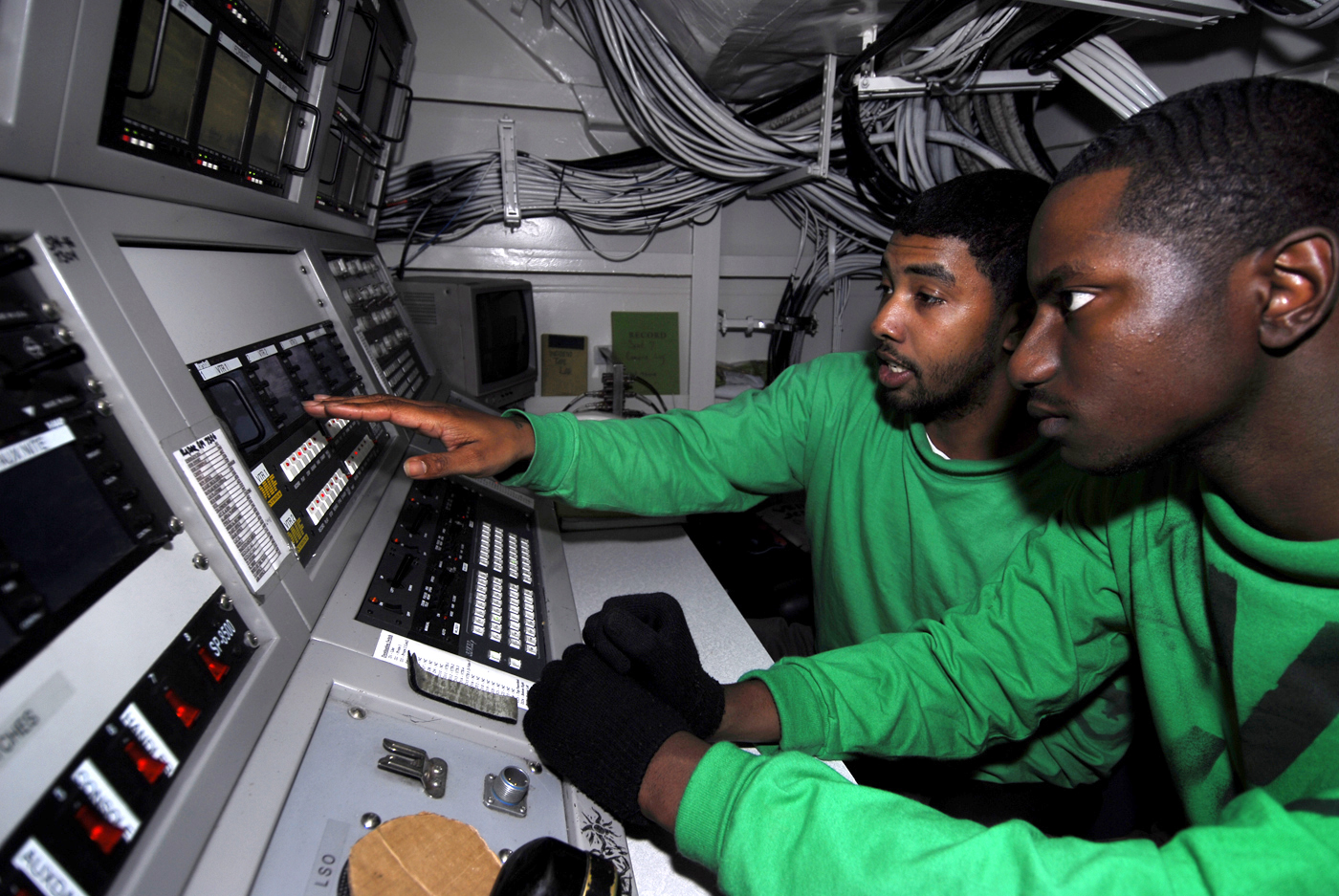
Upon successful completion of ATT, it’s 12 more weeks of training at Naval Training Center (NTC) Great Lakes at Interior Communications Electronics (IC) Class A School.
At A school, the ICs study subjects such as schematics, AC/DC circuitry, and solid-state electronics. Electrical math and logic systems are also part of the curriculum. They are also taught CPR.
This Navy technical training includes group instruction, classroom lectures, and practical, hands-on application.
What’s Life Like for an Interior Communications Electrician (IC)?
Interior Communications Electricians perform maintenance on a variety of electronic systems on board ships. These include the wiring of alarms, communications systems, and indicators.
They also work on the ship’s control systems, including speed and steering controls, as well as maintaining power generators and distribution systems.
They may perform repair and maintenance on navigation systems, visual landing aids for aircraft, and environmental systems.
Related Article – Marine Corps Electrician (MOS 1141): Career Details
The day-to-day duties and activities of an IC include:
- Maintain or repair interior communications systems
- Maintain and repair shipboard navigation equipment
- Test and repair interior communications
- Install phone and other comm circuits, boxes, and switchboards
- Maintain dead reckoning and course-plotting equipment
- Maintain and repair TV systems
- Inspect, install, or recharge equipment batteries
ICs work in a variety of environments both at sea and ashore.
They normally work indoors, sometimes in a clean environment, and sometimes in dirty environments of a shop-type nature.
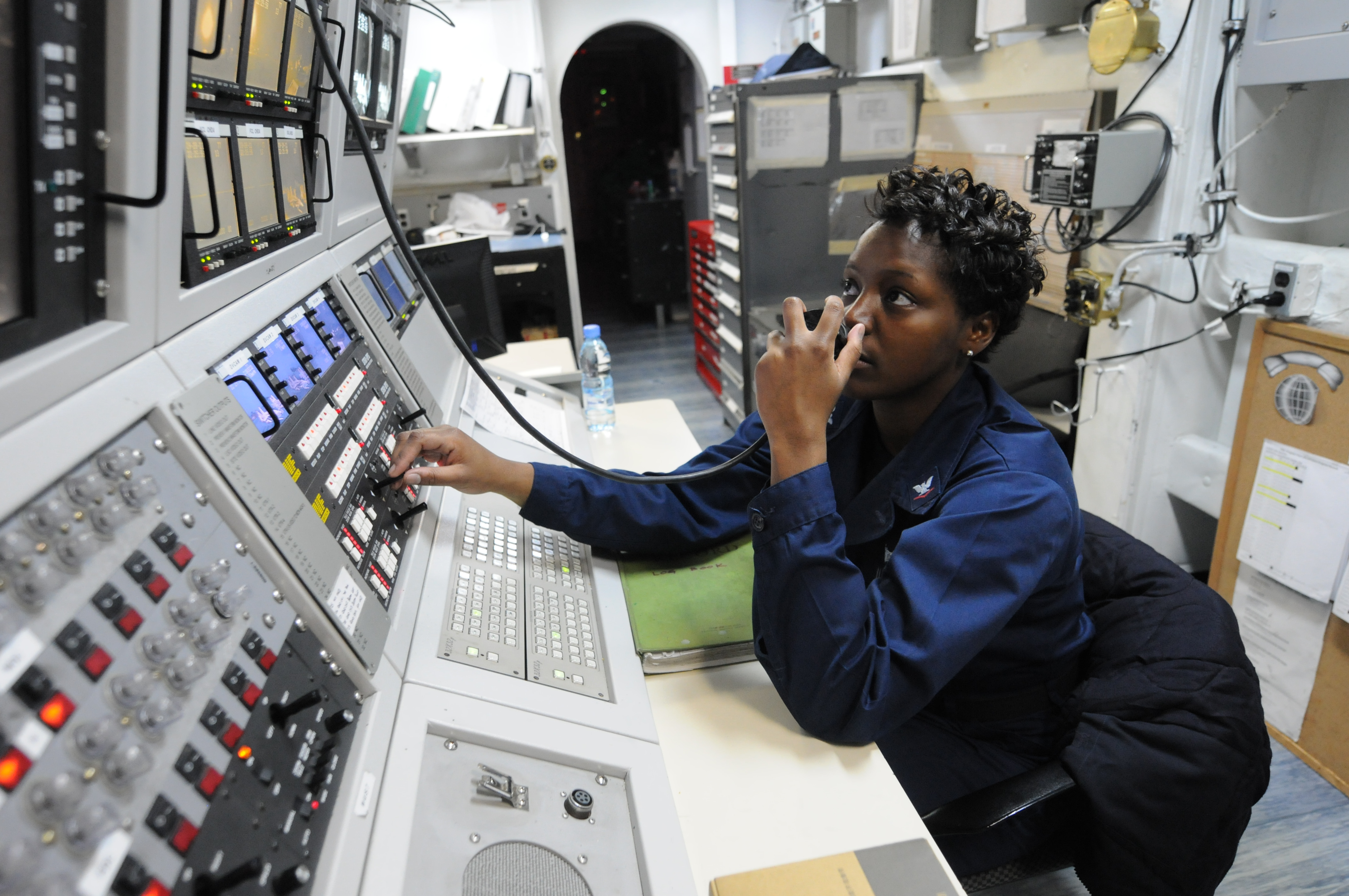
Related Article – Navy Electronics Technician (ET): Career Details
Navy Interior Communications Electrician (IC) Sea/Shore Rotation
The Interior Communications Electrician (IC) rating is one of the most sea-intensive ratings in the Navy.
An IC will spend about 65 percent of his time at sea and 35 percent ashore over the course of a 20-year career.
| Tour | Sea Tour | Shore Tour |
|---|---|---|
| First Tour | 60 Months | 36 Months |
| Second Tour | 60 Months | 36 Months |
| Third Tour | 48 Months | 36 Months |
| Fourth Tour | 48 Months | 36 Months |
| Fifth Tour | 36 Months | 36 Months |
| Sixth Tour | 36 Months | 36 Months |
| Seventh Tour | 36 Months | 36 Months |
How Much Are Interior Communications Electricians (IC) Paid?
Like all the other Armed Services, the Navy bases a sailor’s pay on their rank and length of service.
As are all sailors, ICs may be entitled to other forms of compensation including Basic Allowance for Housing (BAH), Basic Allowance for Subsistence (BAS), sea pay, etc.
Related Article: Navy Aviation Electrician’s Mate (AE)
Job Reviews
Reviews on the career website indeed.com by former and current ICs are overwhelmingly positive.



One former IC described his experience in the Navy on Indeed:
“I loved the Navy. It taught me how far the human mind can stretch and be used in situations that may be dangerous…It was fun working with all of my shipmates and learning things that civilians would never understand.”
The reviews on the career website glassdoor.com are equally positive.
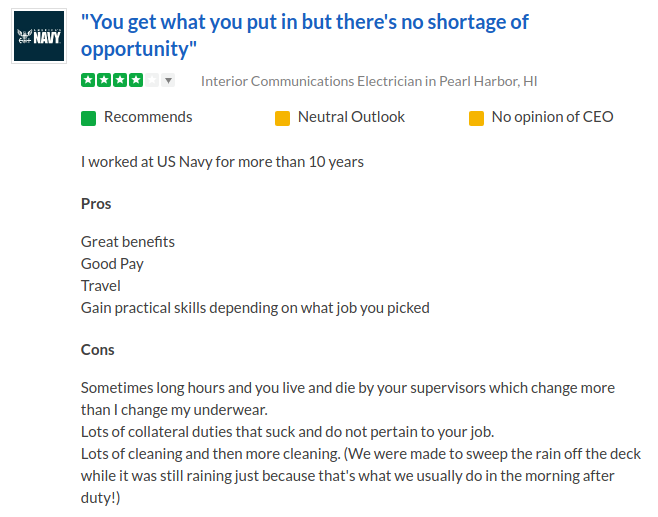
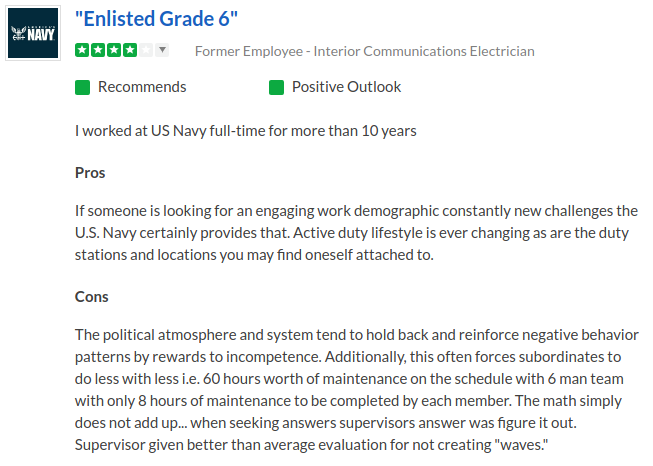
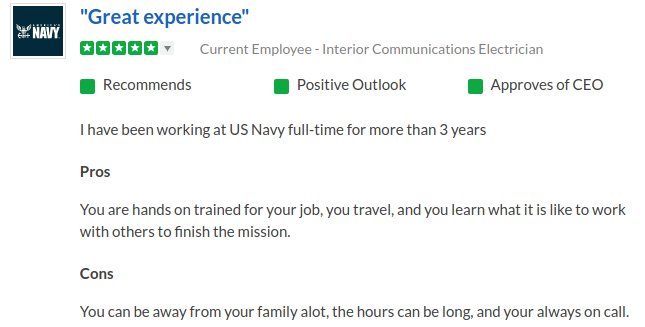
Related Article – Submarine Electronics/Computer Field (SECF): Career Details
IC3 (SW) Loreno Visinho, stationed aboard the Wasp-class amphibious assault ship USS Essex (LHD-2), described her duties:
“I am responsible for the repair and upkeep for the phones and alarm systems throughout the ship. I am also responsible for maintenance of the announcement systems throughout the ship as well to make sure the internal communications are working properly.”
IC3 (SW) Visinho is especially proud of earning her Enlisted Surface Warfare Specialist (ESWS) pin.
The petty officer is equally proud of serving in the Navy.
“Serving in the Navy means that I am helping my country and contributing to the freedom of our citizens so they can feel safe when they go to bed at night.”
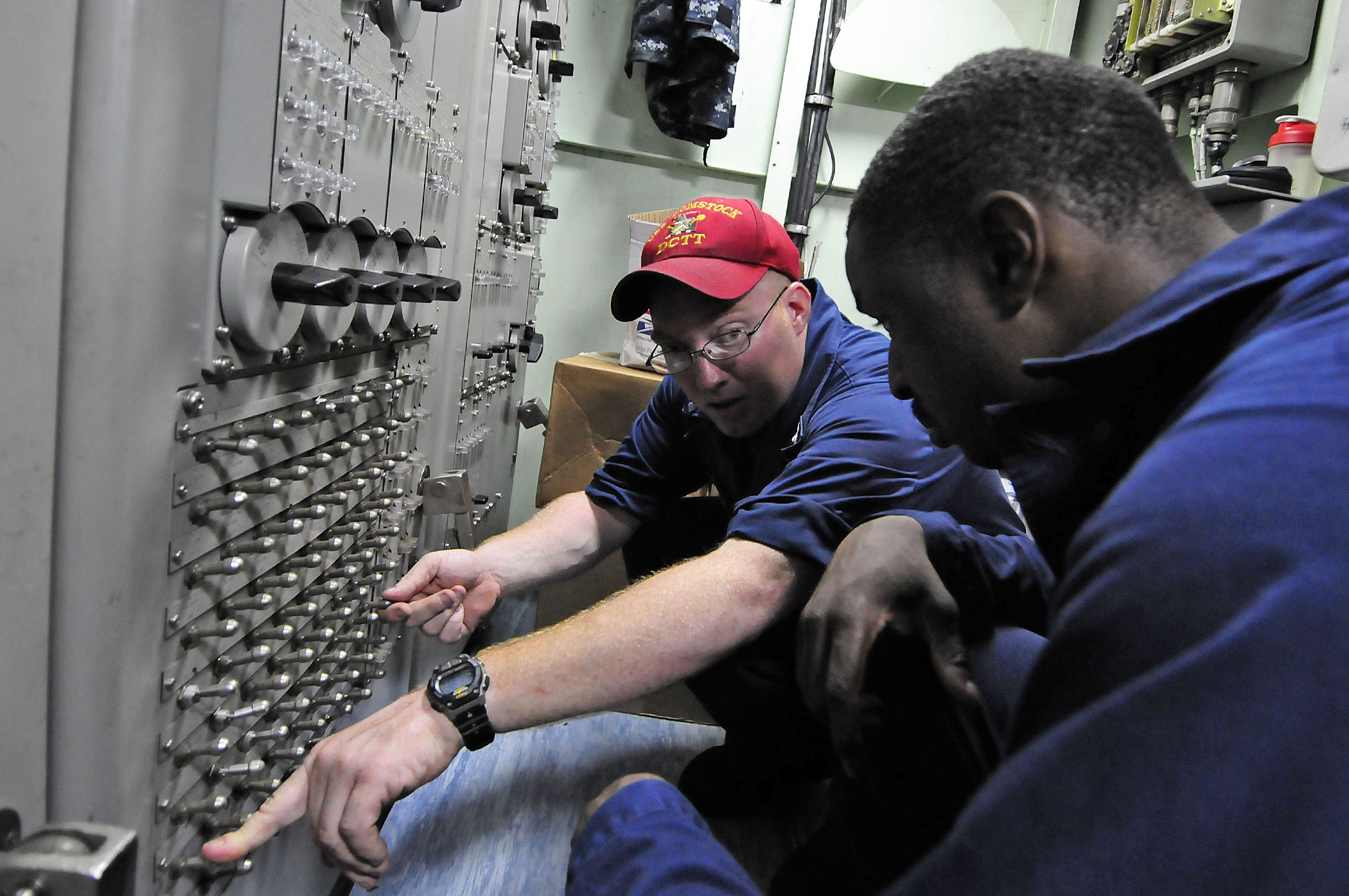
The Department of the Navy’s Credentialing Opportunities Online (COOL) website estimates there are only about 2,200 sailors serving as Interior Communications Electricians in the Navy today.
Related Article: 10 Best Jobs In The Navy For Civilian Life
Civilian Career Opportunities
Interior Communications Electricians retiring or departing the Navy suffer from no shortage of civilian career opportunities after their service.
This is largely due to the extensive training and experience they gain while serving in the Navy.
The Navy COOL Summary For Interior Communications Electrician (IC) lists over 15 potential civilian job opportunities post-Navy. A few of these include:
- Electrician
- Audio and Video Equipment Technician
- Security and Fire Alarm Systems Installer
- Radio, Cellular, and Tower Equipment Installer and Repairer
- Government Property Inspector and Investigator
Like all sailors, ICs should take full advantage of the on-the-job (OJT) training opportunities and educational opportunities offered during their naval service.
The United States Military Apprenticeship Program (USMAP) also allows ICs to complete several of their civilian apprenticeship requirements while on active duty.
This allows them to obtain a US Department of Labor (DOL) nationally recognized “Certificate of Completion” to prepare for life outside the Navy.
ICs can obtain over 25 national certifications and multiple state licenses.
If you are a young man or woman and meet the requirements, are resourceful, and have manual dexterity with tools, equipment, and machines, the Interior Communications (IC) rating could just be a fit for you.
You will learn highly sought-after technical skills while having the opportunity to serve in the US Navy and see the world.
Related Article: 15 Best States For Military Retirees And Veterans
References
U.S. Navy Personnel Command Interior Communications Specialist (IC) Overview
Navy COOL Summary For Interior Communications Specialist (IC)
U.S. Navy COOL Interior Communications Specialist (IC) Rating Card
YourValley.net News Article on IC3 Loreno Visinho
Navy Interior Communications Specialist (IC) Reviews -glassdoor.com
- Gas Turbine Systems Technician (GSM and GSE): Career Details - June 18, 2024
- Interior Communications Electrician (IC): 2023 Career Details - June 18, 2024
- Religious Program Specialist (RP): 2023 Career Details - June 18, 2024

